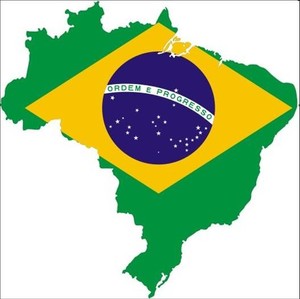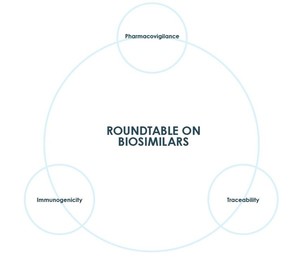The US-based Alliance for Safe Biologic Medicines (ASBM) announced on 28 November 2012 that its recommendations with respect to identification and substitution of biosimilars have been published in the Food and Drug Law Institute (FDLI) policy forum.
The paper titled ‘It’s all about the name: what is the imperative of adopting unique names for biologic and biosimilar therapeutics?’ explains the ASBM’s position that in order to ensure patient safety as biosimilars are approved in the US, they must be given distinct, non-proprietary names. The paper identifies key challenges and practical solutions to help facilitate a solution to ensure safety is the cornerstone of the biosimilars pathway.
In the paper, ASBM, which represents diverse healthcare groups and individuals, including patients, physicians and innovative medical biotechnology companies, makes four policy recommendations:
All biologicals should receive distinct non-proprietary names.
This recommendation is based on the fact that biosimilar and interchangeable biologicals will be only similar to, but not the same as, an original reference product. From which ASBM concludes that ‘from a patient and provider perspective, it would be inappropriate, unsafe, and misleading to allow biosimilars to use the same name for biological products that are not exactly the same.’
To add weight to this recommendation they refer to their survey of physicians, which revealed that 76% of physicians would assume that biologicals with the same name are identical to one another [1].
-
United States Pharmacopeia (USP) should work with FDA to adapt the product monograph system to accommodate the unique attributes of structurally-related, but distinct, biological medicines.
ASBM are concerned that USP has indicated in submissions to FDA and elsewhere that the issuance of a monograph should dictate the nomenclature for a biological medicine. ASBM believes that since biosimilars will share some, but not necessarily all, elements of their biochemical identity and quality attributes with an originator product it makes sense that biosimilars be linked through common public standards, even if they are not named identically.
The non-proprietary name of a reference product and product/s biosimilar to it should have a common, shared root but have distinct and differentiating suffixes.
ASBM believes that having a shared root and distinct prefix in the non-proprietary name would provide the benefit of demonstrating a relationship between the reference and biosimilar products. While including a distinct prefix would assist in identifying a specific manufacturer.
On the other hand, ASBM concedes that having entirely distinct non-proprietary names would have the benefit of ensuring that the products are not confused with one another and can be directly traced to a manufacturer. However, this approach would provide no indication or notation that the products are related, which would hamper attempts to search for a class effect.
Products designated interchangeable should have a distinct name from the reference product for which they are considered interchangeable to facilitate accurate attribution of adverse events.
ASBM believes that it is extremely important that FDA continues with a measured review of the issue and that they proceed with caution to ensure patient safety is the driving factor when discussing interchangeability.
ASBM argues that the similarity between the reference product and its interchangeable biological product may change over time as a result of manufacturing, environmental, and other changes, impacting one or both products. They conclude that this potential divergence post-approval must be addressed with sound policy, including a commitment to distinct names for all biologicals, regardless of an interchangeability designation.
The paper supports the views of advocates for unique naming for biosimilars, who have claimed that if a common non-proprietary name were used, patients would not know which drug they are getting [2].
Advocates for a common name for biosimilars, on the other hand, are concerned that there could be the possibility of overdosing or mis-dosing if different names were used, as a patient could inadvertently be prescribed two versions of the same biosimilar [2].
Editor’s comment
Readers interested to learn more about the discussion on the biosimilars situation in the US are invited to visit www.gabi-journal.net to view the following manuscripts planned in 2013 in GaBI Journal:
Assessing biosimilarity and interchangeability of biosimilar products under the Biologics Price Competition and Innovation Act*
The future of biological therapy: a pathway forward for biosimilars
*Professor Shein-Chung Chow is a member of the International Editorial Advisory Board of GaBI Journal, an expert in bioavailability/biosimilarity and bioequivalence; and is the Guest Editor of the Special Issue (educational editorial series) on 'Biosimilarity and Interchangeability' currently under production by GaBI Journal, contact us for more information on this Special Issue.
Related articles
American dermatologists update position statement on biosimilar substitution
Amgen welcomes biosimilar monoclonal antibody guideline
References
1. GaBI Online - Generics and Biosimilars Initiative. Naming and interchangeability of biosimilars raised in new survey [www.gabionline.net]. Mol, Belgium: Pro Pharma Communications International; [cited 2012 Nov 30]. Available from: www.gabionline.net/Biosimilars/General/Naming-and-interchangeability-of-biosimilars-raised-in-new-survey
2. GaBI Online - Generics and Biosimilars Initiative. FDA’s public hearing on biosimilars guidance [www.gabionline.net]. Mol, Belgium: Pro Pharma Communications International; [cited 2012 Nov 30]. Available from: www.gabionline.net/Biosimilars/General/FDA-s-public-hearing-on-biosimilars-draft-guidances
Permission granted to reproduce for personal and non-commercial use only. All other reproduction, copy or reprinting of all or part of any ‘Content’ found on this website is strictly prohibited without the prior consent of the publisher. Contact the publisher to obtain permission before redistributing.
Copyright – Unless otherwise stated all contents of this website are © 2012 Pro Pharma Communications International. All Rights Reserved.








 0
0











Post your comment